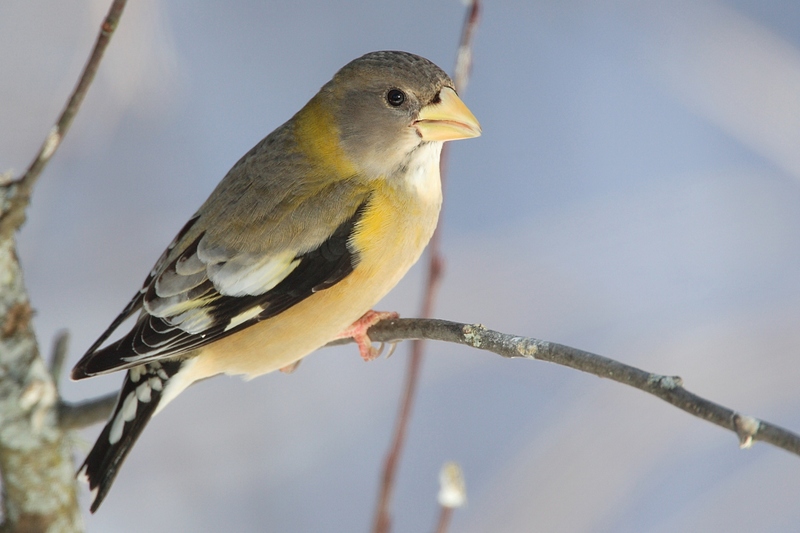|
| Query: Evening grosbeak | Result: 2nd of 36 | |
Evening Grosbeak (Coccothraustes vespertinus) - Wiki
| Subject: | Evening Grosbeak (Coccothraustes vespertinus) - Wiki
| |

| Resolution: 1536x1024
File Size: 576901 Bytes
Date: 2007:02:24 18:48:37
Camera: Canon EOS-1D Mark II (Canon)
F number: f/5.7
Exposure: 1/400 sec
Focal Length: 700/1
Upload Date: 2007:12:27 14:07:46
|
Evening Grosbeak
From Wikipedia, the free encyclopedia
Order: Passeriformes
Family: Fringillidae
[Photo] A female Evening Grosbeak Coccothraustes vespertinus at a Visitor Centre in Algonquin Provincial Park, Ontario, Canada. Date: 24 February 2007. Author: http://en.wikipedia.org/wiki/User:Mdf | Permission is granted to copy, distribute and/or modify this document under the terms of the GNU Free Documentation License, Version 1.2 or any later version published by the Free Software Foundation; with no Invariant Sections, no Front-Cover Texts, and no Back-Cover Texts. A copy of the license is included in the section entitled "GNU Free Documentation License". |
The Evening Grosbeak, Coccothraustes vespertinus, is a large finch. In the past, it was treated in a genus of its own as Hesperiphona vespertina, but is now usually placed in the same genus as the Hawfinch of Eurasia.
The breeding habitat is coniferous and mixed forest across Canada and the western mountainous areas of the United States and Mexico. The nest is built on a horizontal branch or in a fork of a tree.
The migration of this bird is variable; in some winters, it may wander as far south as the southern U.S.
The Evening Grosbeak is 18.5 cm long. The adult has a short black tail, black wings and a large pale bill. The adult male has a bright yellow forehead and body; its head is brown and there is a large white patch in the wing. The adult female is mainly olive-brown, greyer on the underparts and with white patches in the wings.
These birds forage in trees and bushes, sometimes on the ground. They mainly eat seeds, berries and insects. Outside of the nesting season, they often feed in flocks. Sometimes, they will swallow fine gravel for the salts.
The range of this bird has expanded far to the east in historical times, possibly due to plantings of Manitoba maples and other maples and shrubs around farms and the availability of bird feeders in winter.
http://en.wikipedia.org/wiki/Evening_Grosbeak
| The text in this page is based on the copyrighted Wikipedia article shown in above URL. It is used under the GNU Free Documentation License. You may redistribute it, verbatim or modified, providing that you comply with the terms of the GFDL. |
|
Comments |
|---|
| | Guest |
|
Scientific Name: Hesperiphona vespertina (Cooper, 1825)
Synonyms: Coccothraustes vespertinus (Cooper, 1825)
Common Names: Evening Grosbeak
French: Gros-bec errant; German: Abendkernbeißer; Spanish: Picogordo Vespertino
Taxonomy: Fringilla vespertina W. Cooper, 1825, Sault Sainte Marie, Michigan, USA. |
^o^
Animal Pictures Archive for smart phones
^o^
|
|
|

